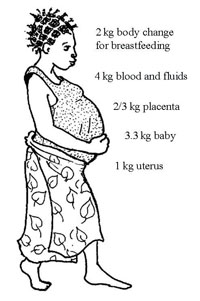Use 'Print preview' to check the number of pages and printer settings.
Print functionality varies between browsers.
Printable page generated Thursday, 25 April 2024, 12:05 AM
Nutrition Module: 3. Nutritional Requirements Throughout the Lifecycle
Session 3 Nutritional Requirements Throughout the Lifecycle
Introduction
In the previous two sessions, you learnt about food, diet and nutrients as well as the food sources of the different nutrients.
In this session you will learn about the nutritional needs at different stages of the lifecycle. The nutrient requirements during the four main stages of the human lifecycle vary considerably. What infants and children require is different from what adults and the elderly need. In addition, there might be specific nutrients which a pregnant women and lactating mothers need in higher amounts than adult men. Therefore, as a Health Extension Practitioner, this study session will help you to give the appropriate messages to different population groups.
Learning Outcomes for Study Session 3
When you have studied this session, you should be able to:
3.1 Define and use correctly all of the key words printed in bold. (SAQs 3.1 and 3.4)
3.2 Describe the food needs of pregnant and breastfeeding mothers. (SAQs 3.1 and 3.2)
3.3 Describe the nutrient requirements during infancy and childhood. (SAQs 3.2 and 3.3)
3.4 Describe the nutritional requirements of adolescents and adults. (SAQ 3.4)
3.5 Describe the nutrient needs of older people. (SAQ 3.3)
3.1 Why it is important to know nutritional requirements
You need to know nutritional requirements of an individual or group for two major reasons:
Prescriptive reasons: that is, to provide or dispense food supplies; for example:
- to procure food for national consumption
- to secure food for institutional consumption
- to run nutritional supplementation programmes.
Diagnostic reasons: mainly to identify whether a group or an individual is suffering from malnutrition of any kind; for example:
- to evaluate nutritional intervention programmes
- to determine whether the food available in the stock is adequate to feed the household or nation for a certain duration of time.
In order to estimate nutritional requirements of individuals or groups, we need to consider the following factors:
- Physical activity — whether a person is engaged in heavy physical activity
- The age and sex of the individual or group
- Body size and composition — what the general build is of a person or group
- Climate — whether a person or group is living in hot or cold climate
- Physiological states, such as pregnancy and lactation.
Based on these factors, nutritional requirements in the different segments of the population can be classified into four groups. These correspond to different parts of the lifespan, namely (a) pregnancy and lactation, (b) infancy and childhood (c) adolescence and adulthood, and (d) old age. You are now going to look at each of these in turn.
3.2 Nutrition during pregnancy and lactation
An unborn child needs a healthy and well-nourished mother to grow properly. Therefore, a mother needs to gain weight during pregnancy to help nourish her growing baby. Women who do not gain enough weight often have babies that weigh too little (low birth weight). A baby weighing less than 2.5 kg has an increased chance of both physical and mental health problems. It may also suffer more from infection and malnutrition compared with babies of normal weight. The increased requirement of nutrients during pregnancy and lactation is shown in Box 3.1.
Box 3.1 Increased nutrients required during pregnancy
Increased requirements: energy, protein, essential fatty acids, vitamin A, vitamin C, B vitamins (B1, B2, B3, B5, B6, B12, folate), calcium, phosphorus, iron, zinc, copper and iodine.
Women should gain at least 11 kg during pregnancy (Figure 3.1). If the mother gains less than this, the baby’s chances of survival and health declines. If a mother is overweight, she still needs to gain for her baby’s health. She should not try to lose weight while she is pregnant.
3.2.1 Gaining weight in pregnancy
A pregnant mother should gain weight smoothly and steadily. If weight gain occurs suddenly, she should see a health professional.
- During the first three months, she should expect to gain a total of 1–2 kg.
- During the last six months, she needs to gain about 0.5 kg each week.
- If she has already gained 11 kg after six–seven months, she should continue to gain moderately until delivery.
The baby puts most of its weight during the last few months.
A 29 weeks pregnant woman (that is seven months and one week) has already gained 12 kilograms of weight. What would you advise her and why?
Even though the pregnant woman has gained 12 kg (the minimum required being 11 kg), you should advise her to continue to gain weight little by little until her baby is born. This is because the unborn baby puts on most of its weight during the last months of pregnancy.
3.2.2 Eating during pregnancy
Women’s nutrition during pregnancy and lactation should focus on the three micronutrients (vitamin A, iron and iodine) and extra energy intake/reduction of energy expenditure. Therefore the following are essential nutrition actions related to maternal nutrition:
- A pregnant or breastfeeding woman needs extra foods, especially those that are good sources of iron.
- Pregnant women need at least one additional meal (200 Kcal) per day during the pregnancy.
- A pregnant woman needs to cut down her energy expenditure. She should reduce her involvement in strenuous household tasks that lead to higher energy expenditure.
- Pregnant women should eat iodised salt in their diet.
- Pregnant women should take vitamin A rich foods (such as papaya, mango, tomato, carrot, and green leafy vegetable) and animal foods (such as fish and liver).
- In the malarious areas, pregnant women should sleep under an insecticide-treated bed net.
- Pregnant women during the third trimester of pregnancy should be de-wormed using mebendazole or albendazole (you will learn about the doses for this in Study Session 7 of this Module).
- Pregnant women need a well balanced diet containing mixture of foods. This should include as far as possible food from the different food groups (animal products, fruits, vegetables, cereals and legumes).
Remember, there is no need for high-priced foods! A pregnant or lactating woman can get extra foods by eating a little more of ordinary meals. She should increase the amount of nourishment at one or two meals, not every meal.
3.2.3 Preventing anaemia in pregnancy
Some women feel weak and tired when pregnant. They may be anaemic, which in turn means that they may have difficulty in pregnancy and childbirth. Common problems linked to the mother’s anaemia include:
- Babies will be born without three to six months iron supply
- Breastmilk may have insufficient iron.
A pregnant or breastfeeding mother should have enough iron to keep herself and her baby healthy. She should eat plenty of iron-rich foods every day such as dried beans, legumes, dark green leafy vegetables, liver, kidney and heart.
A pregnant mother should go for her first antenatal care visit at the latest by the fourth month of her pregnancy. At the clinic, check her urine for excess sugar and proteins, and her blood for malaria (if she is showing signs of infection).
You diagnose anaemia in the following way:
Examine the lower eyelids, the inside of the lips and the palms which should be bright pink; if there is anaemia, all of these will be pale whitish.
- Give the mother iron tablets or tablets with iron and folate to build strong blood
- Remind the mother to take the tablets after a main meal. She should not take iron tablets with tea, coffee or milk
- If the iron tablets upset the mother or cause side effects, she should not stop taking iron, but eat more leafy vegetables.
3.2.4 Pregnant women with special needs
Some pregnant women in your community will be particularly vulnerable. As a Health Extension Practitioner it is important that you identify the women who may need extra help and support. Box 3.2 gives examples of women who may need special help from you and outlines the kinds of service you can provide for them.
Box 3.2 Identifying and helping pregnant women who need special help
Pregnant women who might need special help include:
- Women from poor families, or who are unemployed
- Women who are widows/separated, and have no support
- Mothers who have given birth to many babies over a short time
- Women who are ill from diseases like Tuberculosis (TB)
- Women who look thin and depressed
- Mothers whose previous babies were small and malnourished
- Teenagers
- Women with a history of their baby or babies dying in their first year of life
- Mothers overburdened with work
- Mothers who are very worried, particularly first time pregnancies.
The Health Extension Practitioner’s role:
- Visit the pregnant women often
- Encourage them to eat as good mixture of foods as they can afford (fruits, vegetables, animal source foods)
- Let them be the first ones to receive iron or food supplements, when available
- Help them to get proper healthcare
- Encourage other members of the household to do some of the work and lessen the work burden on the woman.
What are the effects of low maternal iron level for the baby and mother in pregnancy?
The mother will have difficulty during childbirth and pregnancy. The baby of an anaemic mother will not develop well and will have low birth weight. The baby will then be easily affected by different infections.
Which parts of the body should you examine to find out whether a pregnant woman is anaemic or not?
You should examine the lower eyelids, inside of the lips and the palms of the hand. If there is anaemia, they will be pale whitish; if there is no anaemia they will be pinkish.
3.3 Nutrition during lactation (breastfeeding)
If all babies are to be healthy and grow well, they must be fed breastmilk. When a baby sucks at the nipple, this causes the milk to come into the breast and continue to flow. Breastmilk is food produced by the mother’s body especially for the baby, and it contains all the nutrients (nourishment) a healthy baby needs.
A lactating woman needs at least two extra meals (550 Kcal) of whatever is available at home. In addition a dose of vitamin A (200,000IU) should be given once between delivery and six weeks after delivery. This will enable the baby to get an adequate supply of vitamin A for the first six months. During the first six months the best way of feeding the baby is for the mother to breastfeed exclusively. You will learn more about this in Study Session 4 of this Module. Box 3.3 shows the nutrients required during lactation.
Box 3.3 Increased nutrients required during lactation
Increased requirements: vitamins A, C, E, all B vitamins, and sodium (applies only to individuals under age 18).
In addition to extra meals and one high dose of vitamin A, a breastfeeding woman also needs:
- Iodised salt in her diet
- At least one litre of water per day
- Vitamin A rich foods (such as papaya, mango, tomato, carrot and green leafy vegetables) and animal foods (such as fish and liver).
You have learnt what pregnant and lactating women require to be healthy and well for themselves and their babies. Now you are going to look at the nutritional requirements of infants, children and adolescents.
3.4 Nutritional requirements in infancy, childhood and adolescence
The common feature of infancy, childhood and adolescence is that all these age groups are undergoing rapid growth and development. This in turn poses a heavy demand on their nutritional requirements. Small children and infants do not have a well developed body nutrient store, and therefore are more vulnerable to infection. In addition they have a larger surface area compared to their body size. All these factors increase their basal metabolic rate (BMR), resulting in an increased requirement for nutrients.
3.4.1 Adolescent growth spurt
Adolescents also undergo a very rapid growth during their puberty (called the pubertal growth spurt). During the pubertal growth spurt, they increase rapidly both in weight and height. Therefore, they need a nutrient intake that is proportional with their rate of growth. The growth rate is very high right after birth (infancy). Then the growth rate slows down until the age of 12–14 years. At about 15–16 years (the pubertal period) there is a sharp rise in growth rate/velocity. After that, the growth rate slows down again.
Requirements for macronutrients (proteins, carbohydrates and fats) and micronutrients are higher on a per kilogram basis during infancy and childhood than at any other developmental stage. These needs are influenced by the rapid cell division occurring during growth, which requires protein, energy and fat. Increased needs for these nutrients are reflected in daily requirements for these age groups, some of which are briefly discussed below.
3.4.2 Increased need for nutrients
Energy
While most adults require 25–30 calories per kg, a 4 kg infant requires more than 100 kilocalories per kg (430 calories/day). Infants of four to six months who weigh 6 kg require roughly 82 kilocalories per kg (490 calories/day). Energy needs remain high through the early formative years. Children of one to three years require approximately 83 kilocalories per kg (990 calories/day). Energy requirements decline thereafter and are based on weight, height, and physical activity.
As an energy source, breastmilk offers significant advantages over manufactured formula milk. Breastfeeding is associated with reduced risk for obesity, a wide range of allergies, hypertension, and type 1 diabetes. It is also linked with improved cognitive development; and with decreased incidence and severity of infections. It is also less costly than formula feeding. The list below outlines the nutrients and other constituents of breastmilk:
- Water = 87–89%
- Vitamins (particularly vitamin A)
- Fat = 3–5%
- Energy = 60–70 kcal/100 ml
- Carbohydrate (lactose) = 6.9–7.2%
- Mineral = 0.2%
- Protein = 0.8–0.9%
Higher intakes of protein and energy for growth are recommended for adolescents. For most micronutrients, recommendations are the same as for adults. Exceptions are made for certain minerals needed for bone growth (e.g. calcium and phosphorus). Evidence is clear that bone calcium accretion increases as a result of exercise rather than from increases in calcium intake. Since weight gain often begins during adolescence and young adulthood, young people must establish healthy eating and lifestyle habits that reduce the risk for chronic disease later in life.
Water
Infants and children need plenty of water to drink, particularly when ill, or exposed to extreme temperatures.
Total water requirements (from beverages and foods) are also higher in infants and children than for adults. Children have a larger body surface area per unit of body weight and a reduced capacity for sweating when compared with adults, and therefore are at greater risk of morbidity and mortality from dehydration. Parents may underestimate these fluid needs, especially if infants and children are experiencing fever, diarrhoea or exposure to very cold or very hot temperatures.
Essential fatty acids
Requirements for fatty acids or fats on a per kilogram basis are higher in infants than adults (see Box 3.4). Some fatty acids play a key role in the central nervous system. However infants and children should not ingest large amounts of foods that contain predominantly fats, so it is important to get the balance right.
Box 3.4 Increased nutrients required during infancy, childhood and adolescence
Infancy and childhood
Increased requirements of energy, protein, essential fatty acids, calcium and phosphorus.
Adolescence
Increased requirements of energy, protein, calcium, phosphorus and zinc.
3.5 Nutritional requirements during adulthood
The nutritional needs in adults of 19–50 years of age differ slightly according to gender. Males require more of vitamins C, K, B1, B2 and B3, and zinc. Females require more iron, compared with males of similar age.
You have already seen that pregnant women and lactating mothers have particular nutrient requirements that are necessary for their own health as well as the health of their baby.
3.6 Nutritional requirements during later years
Elderly people are especially vulnerable to nutritional problems due to age related changes in their body (impaired physiological and anatomical capacity). Box 3.5 overleaf sets out some of the problems an older person might experience which could impact on their diet.
Box 3.5 Possible nutritional issues in old age
- Problems of procuring and preparing foods
- Psychosocial problems
- Digestion problems
- Nutrient absorption problems
- Renal changes
- Memory loss (senile dementia), which may include forgetting to eat
- Sensory changes
- Physical problems like weakness, gouty arthritis and painful joints.
3.6.1 Specific nutrient requirements in old age
An elderly person requires less energy than a younger individual due to reductions in muscle mass and physical activity. Some daily requirements for elderly people differ from those of younger adults. For example, in order to reduce the risk for age related bone loss and fracture, the requirement for vitamin D is increased from 200 IU/day to 400 in individuals of 51–70 years of age and to 600 IU/day for those over 70 years of age. Suggested iron intakes reduce however from 18 mg per day in women aged 19–50 to 8 mg/day after age 50, due to better iron conservation and decreased losses in postmenopausal women compared with younger women.
Some elderly people have difficulty getting adequate nutrition because of age or disease related impairments in chewing, swallowing, digesting and absorbing nutrients. Their nutrient status may also be affected by decreased production of chemicals to digest food (digestive enzymes), changes in the cells of the bowel surface and drug–nutrient interactions. Some elderly people demonstrate selenium deficiency, a mineral important for immune function. Impaired immune function affects susceptibility to infections and tumours (malignancies). Vitamin B6 helps to boost selenium levels, so a higher intake for people aged 51–70 is recommended.
Nutritional interventions should first emphasise healthy foods, with supplements playing a secondary role. Although modest supplementary doses of micronutrients can both prevent deficiency and support immune functions, very high dose supplementation (example, high dose zinc) may have the opposite effect and result in immune-suppression. Therefore, elderly people also need special attention with regard to nutritional care.
3.7 Nutritional requirements throughout the life cycle: conclusion
Requirements for energy and micronutrients change throughout the life cycle. Although inadequate intake of certain micronutrients is a concern, problems also come from the dietary excesses of energy, saturated fat, cholesterol and eating refined carbohydrates, all of which are contributing to obesity and chronic disease in developed countries. Below is a summary of the number of meals required at different stages in the lifecycle that might assist you in your work in your community.
Elderly people
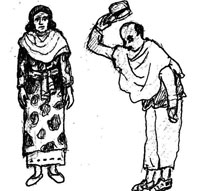
Need at least two and if possible more meals each day as they may not eat much at each meal. They need fewer calories than younger people, but about the same amount of protein and other nutrients. Women who have stopped menstruating need less iron than childbearing women. Old people may need soft food.
Men
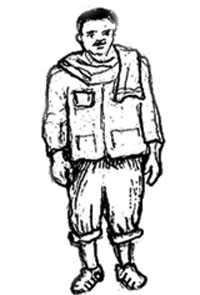
Need at least two mixed meals every day and some snacks. They can get enough energy from few large meals and from bulky food.
Women
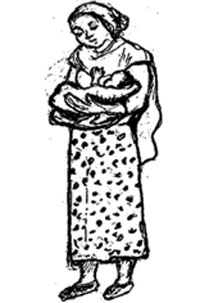
Need at least two mixed meals every day and some snacks. If they are pregnant or lactating they need as almost as much food as men, especially if they are also doing hard physical work. They need much more iron and folate than men especially when they are pregnant.
Adolescents
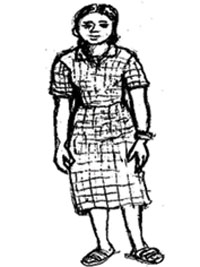
Need at least two large mixed meals and some snacks each day. They can eat bulky food. Boys need a lot of calories. Girls need plenty of iron. Pregnant adolescent girls are still growing so they need more food than pregnant women.
School aged children

Need at least two to three mixed meals and some snacks each day.
Children 1–5 years old

Need breastmilk until they are at least two years old. They need at least three mixed meals and two snacks each day. They cannot eat large bulky meals. It is especially important for the meals to be clean and not to contain parasites or microorganisms that could cause diarrhoea or other infection.
Babies 6-12 months
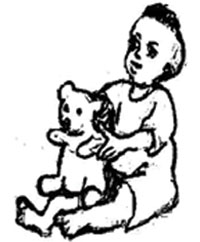
Need breastmilk eight to ten times or more each day. They need small meals, which are not bulky, three to five times a day.
Babies under 6 months old
Need only breastmilk at least eight to ten times each day.
As a Health Extension Practitioner, you can assist families in choosing foods that keeps energy intake within reasonable bounds, while maximising intake of nutrient-rich foods, particularly vegetables, fruits, legumes and whole grains.
Self-Assessment Questions (SAQs) for Study Session 3
Now that you have completed this study session, you can assess how well you have achieved its Learning Outcomes by answering the questions below. Write your answers in your Study Diary and discuss them with your Tutor at the next Study Support Meeting. You can check your answers with the Notes on the Self-Assessment Questions at the end of this Module.
SAQ 3.1 (tests Learning Outcomes 3.1 and 3.2)
A pregnant woman asks your advice about what to eat because she is worried about having another low birth weight baby. What should you tell her?
Answer
When advising a pregnant woman what to eat, you would first tell her that it is very important to gain weight during her pregnancy (at least 11 kilograms). Then you need to advise her about eating foods that contain vitamin A, iron and iodine, and making sure she has enough energy. She needs to eat a well-balanced diet but there is no need for expensive additional foods.
SAQ 3.2 (tests Learning Outcomes 3.2 and 3.3)
Mrs X tells you she does not have enough milk for her baby. What questions would you want to ask before deciding how best to help her?
Answer
If a mother tells you she does not have enough milk for her baby you would want to ask her if she is eating enough (more than she did before becoming a mother), and if she is eating a good mix of food. You would also want to ask her if she is drinking enough. Finally you need to know if she received a dose of vitamin A shortly after giving birth and if she is now eating food containing high amounts of vitamin A.
SAQ 3.3 (tests Learning Outcomes 3.3 and 3.5)
Children and elderly people both need special nutritional care. However, the care they need is different. What are two of these differences?
Answer
There are many differences between the nutritional needs of children and elderly people but you might have chosen two of the following:
- Small children have a higher basal metabolic rate than older people so need more nutrients
- Children have huge energy requirements so need more calories than older people
- Children need more water because they are at greater risk of dehydration
- Older people might have physical problems which make eating difficult
- Older people need more vitamin D.
SAQ 3.4 (tests Learning Outcomes 3.1 and 3.4)
A mother is worried because her adolescent son is eating so much. Is she right to be so worried? What are the reasons for your answer?
Answer
A mother whose adolescent son is eating a lot does not need to worry unless he is eating a lot of one type of food. Adolescents experience a growth spurt at the age of 15/16 so need a large intake of all kinds of nutrients during this time.
